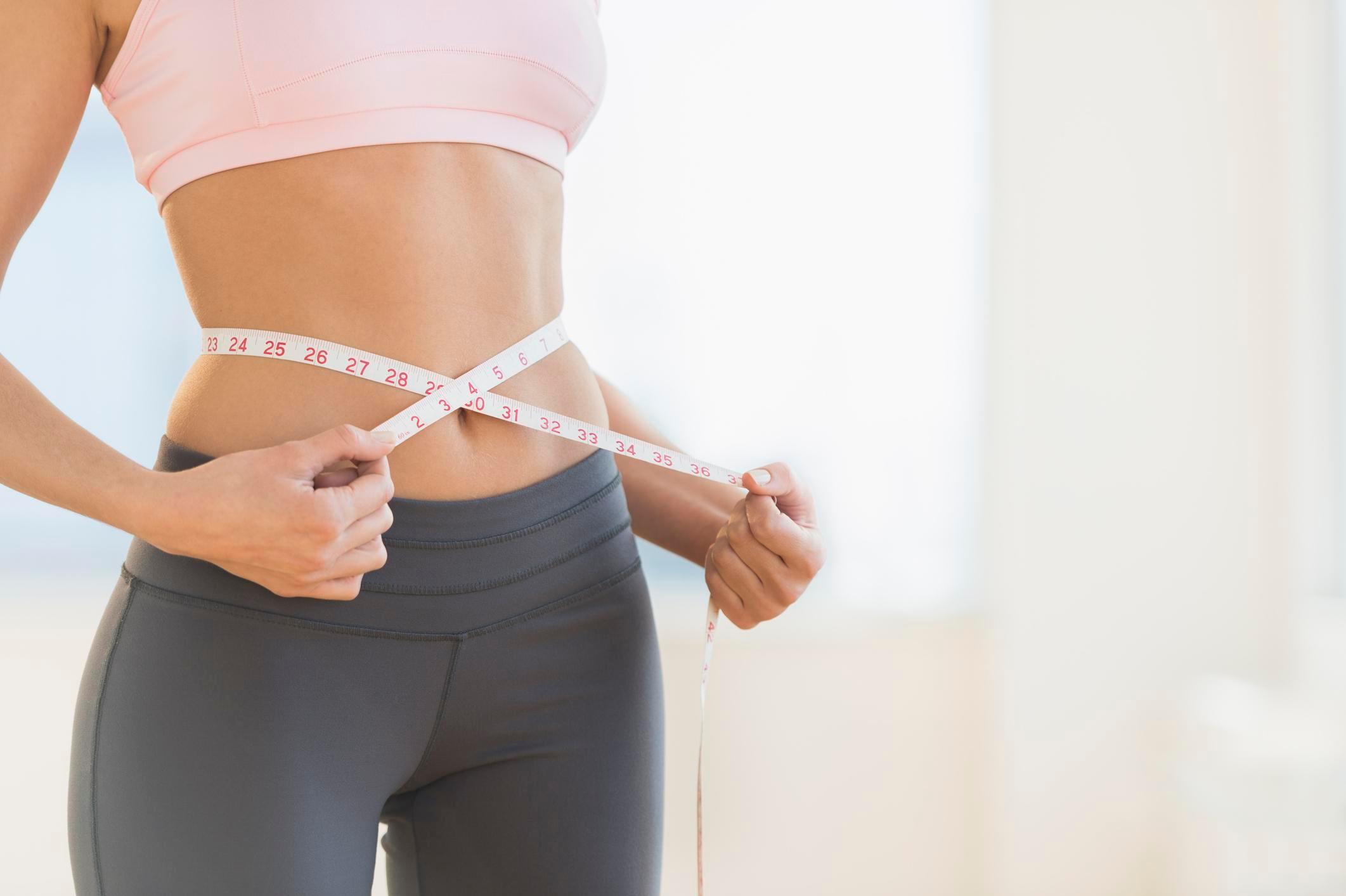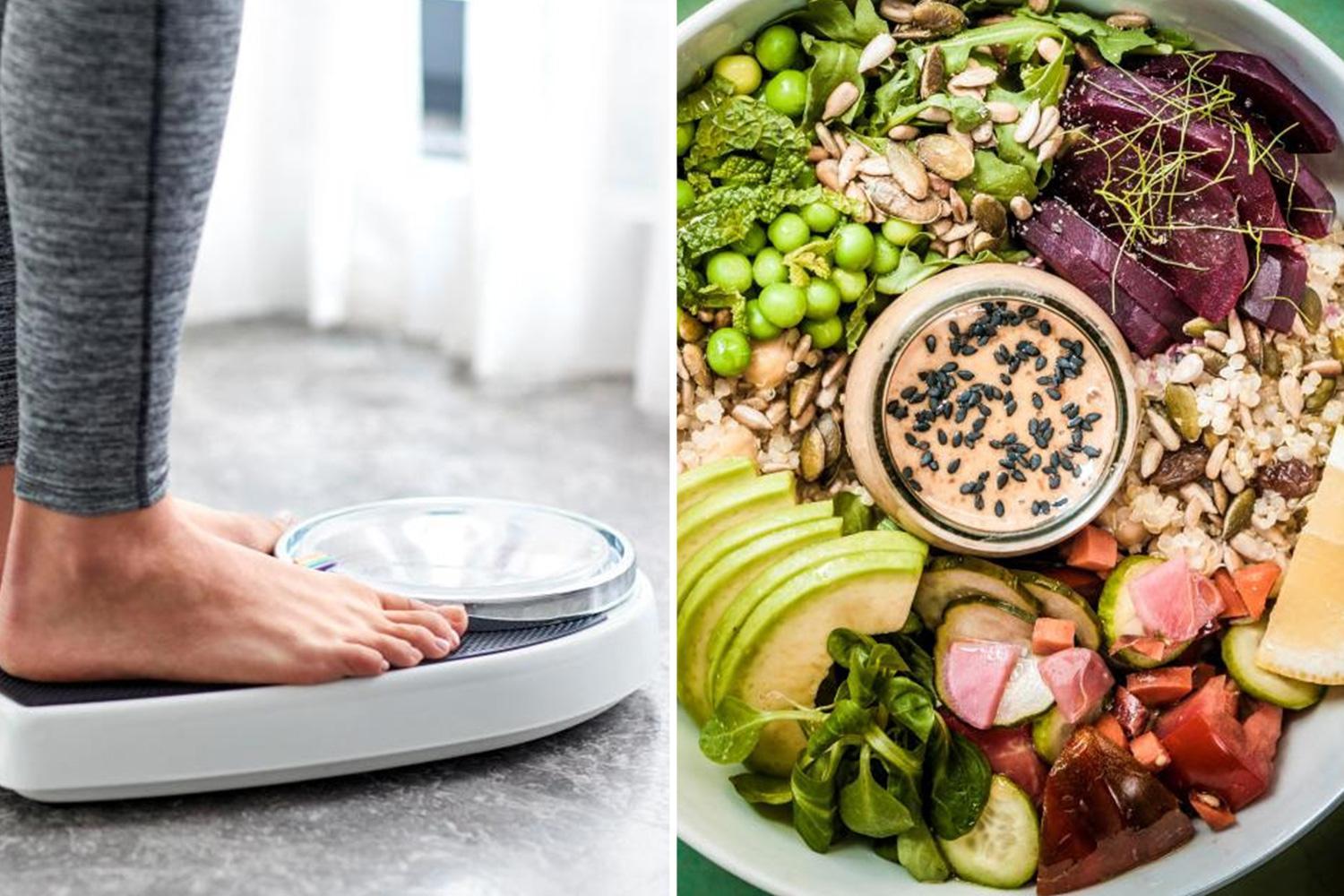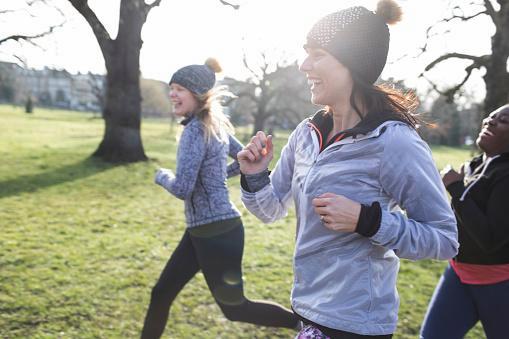IT’S that time of year again, festivities are over and most of us are focusing on how to lose our Christmas bellies.
But where on earth do you even start? There are so many diets out there it can be hard to know which one will work for you.
Kratom Powder for Sale
Left Coast Kratom is here to help you experience the freshest highest quality kratom powders and extracts at competitive prices.
Luckily the British Dietetic Association (BDA) has taken a look at some of the most popular diets around and given its verdict on whether it will work for you.
What is the 5:2 diet?
This diet is based on the principal of intermittent fasting, where you eat normally for five days and restrict your calorie intake for the other two.
On top of losing weight, fans claim the 5:2 diet can improve lifespan and brain function, and protect against conditions such as dementia and Alzheimer’s disease.
But evidence on how effective the diet it is limited.
One 2010 study found women placed on a 5:2 diet achieved similar levels of weight loss to women on a calorie-controlled diet, and were also less likely to develop chronic diseases such as type 2 diabetes.
There is also some evidence that the 5:2 model may help lower the risk of certain obesity-related cancers, such as breast cancer.
Pros:
Sticking to a calorie restricted two days a week is more achievable than seven days, so you are more likely to persevere with this diet and successfully lose weight.
Two days a week on a restricted diet can lead to greater reductions in body fat, insulin resistance and other chronic diseases.
Cons:
Non-restricted days do not mean unlimited eating.
You don’t need to be as strict on your food choices but you do still need to make healthier choices.
Fasting can also make you feel dizzy, irritable, give you headaches and make it heard to concentrate, which can affect your daily life.
Other reported side effects are difficulties sleeping and daytime sleepiness, bad breath, and dehydration.
What does the BDA think?
If you choose to follow it, choose an evidence-based plan based on healthy, balanced eating and written by a dietitian, such as the “2-Day Diet”.
It’s vital for your health to avoid nutritional deficiencies, dehydration and overeating on non-fast days.
Never attempt to delay or skip meals if you are pregnant, have had, or are prone to eating disorders or diabetes.
What is the dukan diet?
This is a low-carbohydrate, high-protein diet.
There is no limit to how much you can eat on this plan’s four phases, provided you stick to the rules.
During phase one you are on a strict lean protein diet, which includes chicken, turkey, eggs, fish and fat-free dairy,
This phase lasts for five days.
Unlike the Atkins diet, Dukan’s phase one bans vegetables and seriously restricts fat.
The next three phases of the plan see the gradual introduction of some fruit, veg and carbs, and eventually all foods.
The aim is gradual weight loss of up to 2 pounds a week and to promote long-term weight management.
There’s no time limit to the final phase, which involves having a protein-only day once a week and taking regular exercise.
Pros:
You can lose weight very quickly to begin with, which can be motivating.
It is very strict, which some people like, and it is easy to follow.
Apart from keeping to low-fat, low-salt and high-protein foods, there’s no restriction on how much you can eat during your first two weeks.
Cons:
The start of the diet can come with a range of side effects including bad breath, a dry mouth, tiredness, dizziness, insomnia and nausea from cutting out carbs.
The lack of wholegrains, fruit and vegetables at the start of the diet can also cause constipation.
What does the BDA think?
The Dukan diet isn’t nutritionally balanced, which is acknowledged by the fact you need a vitamin supplement and a fibre top-up in the form of oat bran.
There’s a danger this type of diet could increase your risk of long-term health problems if you don’t stick to the rules.
The diet lacks variety in the initial phases, so there’s a risk you’ll get bored quickly and give up.
What is the paleo diet?
Also known as the caveman diet, the Paleo diet consists of foods that can be hunted and fished, such as meat, and foods that can be gathered, such as eggs, nuts, fruit, vegetables, herbs and spices.
It’s a regime based on the supposed eating habits of our hunter-gatherer ancestors during the paleolithic era, before the development of agriculture around 10,000 years ago.
That means cereal grains including wheat, dairy, refined sugar, potatoes and salt – as well as anything processed – are strictly off the menu.
Advocates say it is a long-term healthy eating plan that will help you lose weight and reduce the risk of diabetes, heart disease, cancer and other health problems, but more research is requried to substantiate those claims.
Pros:
It encourages you to eat less processed food and more fruit and vegetables.
It reduces your consumption of high calorie food and will help you lose weight.
Some plans go by the 80/20 rule, where you’ll get 99 per cent of the benefits of the Paleo diet if you adhere to it 80 per cent of the time.
This flexibility can make the diet easier to stick to, so you are more likely to be successful.
Cons:
There are no accurate records from our Stone Age ancestors, so the diet is largely based on educated guesses.
Most versions of the diet encourage large amounts of meat, which runs counter to current health advice on meat consumption.
Many versions ban dairy products and wholegrains, which form part of a healthy, balanced diet.
Like all high-protein diets, the Paleo can be expensive, depending on your choice of meat cuts, and it’s impossible to follow without eating meat, seafood or eggs, so it’s not one for vegetarians.
What does the BDA think?
Most versions of the Paleo diet exclude key food groups, raising the potential for nutritional deficiencies unless careful substitutions are made, and dietary supplements may be necessary.
The diet has some positive aspects, so an adapted version that doesn’t ban any food groups – such as wholegrains, dairy and legumes – would be a better choice.
The diet lacks variety, so there’s a risk you’ll get bored quickly and give up.
If you want to copy your paleolithic ancestors, you’re better off mimicking their activity levels, rather than their alleged diet.
What is the New Atkins diet?
This diet promises to turn your body into a fat-burning machine.
The theory is that by starving yourself of carbohydrates, your body will start burning fat for energy.
During the first phase of the New Atkins diet, designed for rapid weight loss, you’re on a protein-rich diet with no restrictions on fat and a daily carb allowance of 20-25 grams.
During the next three phases, the weight loss is likely to be more gradual and regular exercise is encouraged.
More carbs are introduced to your diet with the aim of working out what your ideal carb intake is to maintain a healthy weight for life.
Phase one is designed to help you lose up to 15 pounds in two weeks, reducing to 2-3 pounds during phase two.
Pros:
You can lose weight very quickly, which will keep you motivated.
The diet also encourages people to cut out most processed carbs and alcohol.
With its diet of red meat, butter, cream, cheese and mayonnaise, it’s one of the diets that appeals most to men.
Cons:
Like the Dukin diet, initial side effects can include bad breath, a dry mouth, tiredness, dizziness, insomnia, nausea and constipation from cutting out carbs, and potential for lower fibre intake.
The high intake of saturated fat may increase your risk of heart disease, and there are concerns about the recommendation to add salt.
What does the BDA think?
The amount of processed meat, red meat and saturated fat in this type of diet is an issue, as is the advice to add salt, which all contradict current health advice.
Some could still find it complicated and time consuming, but the promise of initial rapid weight loss may appeal to and motivate some.
What is the alkaline diet?
This diet is based on the idea that modern diets cause our body to produce too much acid.
The theory is excess acid in the body is turned into fat and high acidity has been blamed on conditions such as arthritis, osteoporosis, tiredness and kidney and liver disorders.
The Alkaline diet involves cutting back on acid-producing foods such as meat, wheat and other grains, refined sugar, dairy products, caffeine, alcohol and processed foods in favour of “alkaline foods”, which reduce the body’s acidity levels.
This translates into plenty of fruit and vegetables.
It was originally developed to help prevent kidney stones and urine infections by using diet to adjust the acidity levels in the urine, but there is little evidence to support the diet’s more recent health claims.
Pros:
This means you will be cutting out foods you may normally eat and replacing them with healthier choices, which will also reduce your calorie intake.
Cons:
Your body regulates its own acidity levels, regardless of diet.
When cutting down on dairy products such as milk, cheese and yoghurt, you need to find other calcium substitutes, as cutting out an entire food group is never a good idea.
Getting to grips with what you can and can’t eat on the diet can be time consuming, particularly in the beginning.
What does the BDA think?
The diet lacks evidence, and some versions that advise cutting out entire food groups should be avoided.
The more balanced versions of the diet provide variety and include all the food groups.
If you are going to try the alkaline diet, choose a balanced plan, stick to it to the letter, and stay clear of supplements and other diet-related gimmicks.
What is the Cambridge diet?
The Cambridge Weight Plans are based around buying and eating a range of meal-replacement products with the promise of rapid weight loss.
There are six flexible diet plans ranging from 415 calories to 1,500 calories or more a day, depending on your weight loss goal.
There is also a long-term weight management programme.
The bars, soups, porridges and shakes can be used as your sole source of nutrition or together with low-calorie regular meals.
Pros:
Many people on very low calorie diets find the weight loss to be sudden and quite dramatic.
The meal replacements are all nutritionally balanced, so you’re likely to be getting all the vitamins and minerals you need, albeit not from real food.
Cons:
Again, initial side effects can include bad breath, a dry mouth, tiredness, dizziness, insomnia, nausea and constipation from cutting down on carbs and fibre.
The hardest part of the plan is sticking to it.
Giving up normal meals and swapping them for a snack bar or a shake can be boring and feel socially isolating. This isn’t a plan you can stick to in the long term.
What does the BDA think?
You need to like the meal replacement products to stay with the plan.
Rapid weight loss can be motivating, but it is unsustainable.
A very low calorie diet that involves eating 1,000 calories a day or fewer should not be followed for more than 12 continuous weeks.
If you are eating fewer than 600 calories a day, you should have medical supervision.
What is the South Beach diet?
This is a low-GI diet originally developed for heart patients in the US.
There’s no calorie counting and no limits on portions in the South Beach diet and you’re encouraged to eat three meals and two snacks a day, and follow an exercise plan.
People who have more than 10 pounds to lose start with phase one.
This is a two-week quick weight loss regime where you eat lean protein, including meat, fish and poultry, as well as some low-GI vegetables and unsaturated fats.
Low-GI carbs are re-introduced during phases two and three, which encourage gradual and sustainable weight loss.
Pros:
If you can avoid phase one and start on phase two, there are fewer dietary restrictions in the rest of the plan than some other popular diets.
After phase one, the diet broadly follows the basic principles of healthy eating.
No major food groups are eliminated and plenty of fruit, vegetables and low-GI carbs are recommended.
Cons:
The severe dietary restrictions of phase one may leave you feeling weak and you will miss out on some vitamins, minerals and fibre.
You may initially experience side effects such as bad breath, a dry mouth, tiredness, dizziness, insomnia, nausea and constipation.
What does the BDA think?
The first two weeks are the most difficult to get through.
We’re concerned this diet promises such a large weight loss – up to 13 pounds – in the first two weeks.
This, however, won’t be all fat.
Some of the weight loss will include water and carbs, both of which will be replaced when you begin eating more normally.
Once you get past the initial phase, the diet follows the basic principles of healthy eating and should provide the nutrients you need to stay healthy.
What is the Slimming World diet?
This encourages you to swap high-fat foods for low-fat foods that are naturally filling.
You choose your food from a list of low-fat foods they call “Free Foods”, such as fruit, vegetables, pasta, potatoes, rice, lean meat, fish and eggs, which you can eat in unlimited amounts.
There’s no calorie counting, no foods are banned, and you’re still allowed the occasional treat in the Slimming World diet.
You can get support from fellow slimmers at weekly group meetings and follow an exercise plan to become gradually more active.
It is designed to help you lose about 1-2 pounds a week.
Pros:
No foods are banned, so meals offer balance and variety and are family-friendly.
There is one main plan, called Extra Easy, which is flexible.
The “Body Magic” booklet provided offers ideas to help you raise your activity levels, and meeting as a group can provide valuable support.
Cons:
Slimming World doesn’t educate you about calories.
Without learning about calories and portion sizes, you may struggle to keep the weight off in the long term when you come off the programme.
What does the BDA think?
The group meetings encourage members to share successes, ideas and recipes with each other, but they may not appeal to everyone.
The web-based programme may be helpful for others.
The list of low-energy, filling foods can help to promote a healthy, varied and balanced diet including plenty of fruit and vegetables.
Members gain an appreciation of which foods are higher in energy and should therefore be limited. This is helpful for long-term healthy eating.
What is the Slim-Fast diet?
This is a low-calorie meal replacement plan for people with a BMI of 25 and over.
The plan recommends three snacks a day from an extensive list of its own products, including crisps and chocolate, two meal replacement shakes or bars, and one regular meal taken from a list of recipes on the Slim-Fast website.
You can stay on the Slim-Fast diet for as long as you want, depending on your weight loss goal.
Once reached, you’re advised to have one meal replacement shake a day, up to two low-fat snacks and two healthy meals.
The plan is designed to help you lose about 1-2 pounds a week and you can follow the diet for as long as you want.
Pros:
Meal replacement diets can be effective at helping some people lose weight and keep it off.
The plan is convenient, as the products take the guesswork out of portion control and calorie counting.
No foods are forbidden, although you are encouraged to eat lean protein, fruit and vegetables.
Cons:
On their own, meal replacement diets do little to educate people about their eating habits and change their behaviour.
There’s a risk of putting the weight back on again once you stop using the products.
You may also find it hard to get your 5 A DAY of fruit and veg without careful planning.
What does the BDA think?
If you don’t like the taste of the meal replacement products, you won’t stay with the plan.
The Slim-Fast plan can be useful to kick-start your weight loss regime, but it’s important that you make full use of the online support to learn about the principles of healthy eating and how to manage everyday food and drink.
What is the lighter life diet?
This combines a very low-calorie meal replacement diet with weekly counselling.
With LighterLife Total, for people with a BMI of 30 or more, you eat four food packs a day, consisting of shakes, soups, mousses or bars, and no conventional food.
LighterLife Lite, for those with a BMI of 25-30, involves eating three food packs a day, plus one meal from a list of approved foods.
You stay on the plans until you reach your target weight.
The meal plans can lead to very rapid weight loss, and you’re advised to see your GP before starting.
Pros:
The counselling can help you understand your relationship with food, so hopefully you can make lasting changes to keep the weight off for good.
With the meal replacements, there’s no weighing or measuring, so it’s a hassle-free approach to weight loss.
Cons:
Surviving on a strict diet of shakes and soups and other meal replacements isn’t much fun, and can feel socially isolating.
What does the BDA think?
LighterLife’s very low calorie diet and its counselling component may work for some, particularly people who have struggled to lose weight for years, have health problems as a result of their weight, and are clinically obese with a BMI of more than 30.
A very low calorie diet that involves eating 1,000 calories a day or fewer should not be followed for more than 12 continuous weeks.
If you are eating fewer than 600 calories a day, you should have medical supervision.
What is the Weight Watchers diet?
The WeightWatchers plan is based on the SmartPoints system, which gives a value to foods and drink based on protein, carbs, fat and fibre content.
Essentially, it is a calorie-controlled diet where you get a personal daily allowance, which you can use how you like.
There’s no limit on the amount of fruit and most veg you can eat.
You also get a weekly SmartPoints safety net in case you go over your allowance, as well as an individual exercise plan.
The plan is designed to help you lose up to 2 pounds a week.
Pros:
No foods are banned, so you can eat and drink what you want provided you stick to your points allowance.
The SmartPoints system is easier to follow for some than calorie counting, and less restrictive than other plans.
This is because it introduces a safety net of points, which can be saved up for a special occasion, such as a night out, a small amount of alcohol, or treats.
Cons:
When you begin, working out the points system can be just as time consuming as simply counting calories.
Some people feel pressured into purchasing WeightWatchers-branded foods.
What does the BDA think?
The SmartPoints plan is generally well balanced and can be a foundation for long-term changes in dietary habits.
The support group approach can help keep people motivated and educate them about healthy eating.
But it’s vital that you make the connection between the points system and calories if you want to avoid putting the weight back on once you leave the programme.
What is the Rosemary Conley diet?
Rosemary Conley’s Diet and Fitness plans combine a low-fat, low-GI diet with regular exercise.
You’re encouraged to eat food with 5 per cent or less fat, with the exception of oily fish, porridge oats and lean meat.
Her online weight loss club has a range of tools and videos covering cooking classes, medical, psychological and nutritional advice, plus exercises for all fitness levels.
There is also support and motivation from trained coaches.
You learn about calorie counting and portion size, which can help you sustain your weight loss beyond the programme. The diets are designed to help you lose a stone in seven weeks and encourage lifestyle change.
How long you stay on the plan depends on your weight loss goal.
Pros:
The programme is based around calories, with a focus on cutting fat.
The ‘portion pots’ – which are used to measure foods such as rice, cereal, pasta and baked beans – teach you about portion control.
Physical activity is an integral part of the weight loss plan, with exercise videos suitable for all ages, sizes and abilities offered online.
Cons:
Some low-fat products aren’t necessarily healthier, as they can still be high in sugar and calories.
It’s unrealistic to expect people to go out with their portion pots, which means portion control may be tricky away from the home.
What does the BDA think?
The diet and exercise plans offer a balanced approach to weight loss that teaches you about portion size, the importance of regular exercise and making healthier choices.
The educational element is very useful for long-term weight management once you have left the programme.
We pay for your stories! Do you have a story for The Sun Online news team? Email us at tips@strengthnews.netthe-sun.co.uk or call 0207 782 4368. You can WhatsApp us on 07810 791 502. We pay for videos too. Click here to upload yours
























